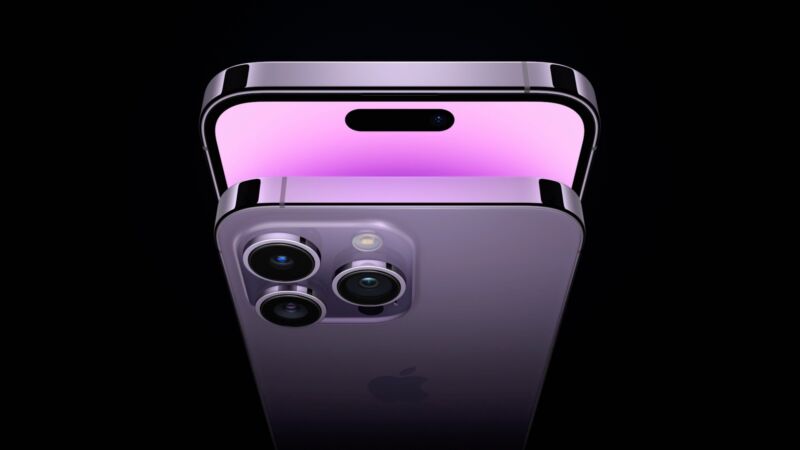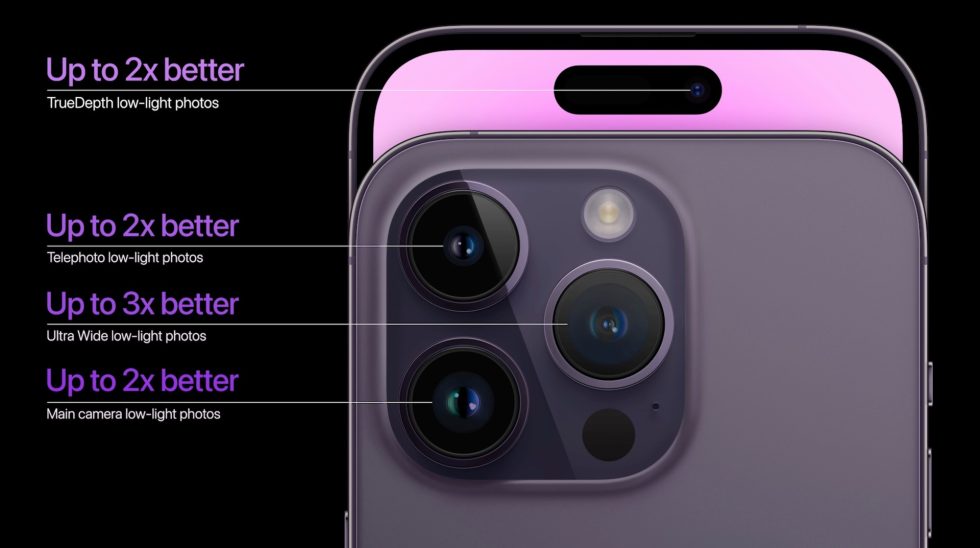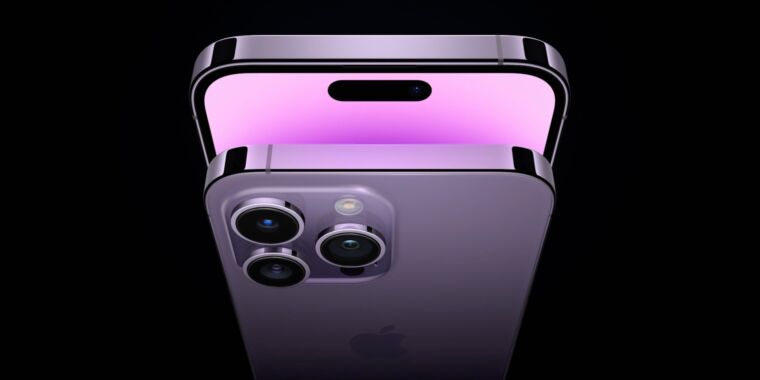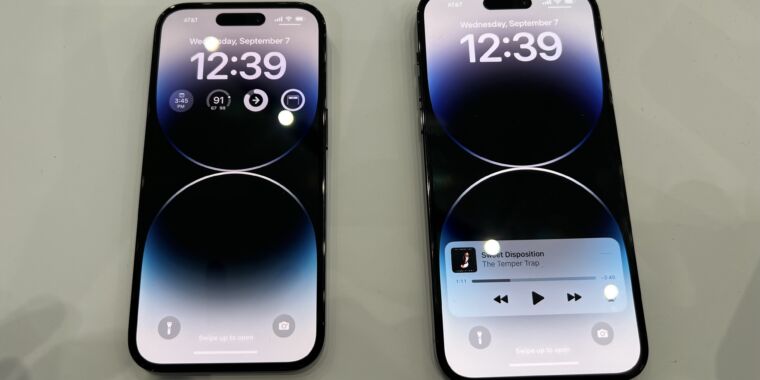
Apple
CUPERTINO, Calif.—Apple’s new flagship phones have been revealed, and critics of the iPhone’s design since 2017 will be happy to see that the company has taken a new approach to the camera and sensor notch at the top of the screen.
Instead of a notch descending from the top of the display, the iPhone 14 Pro and 14 Pro Max use a pill-shaped cutout several pixels below the bottom to house the selfie camera, 3D sensor, and more. Called the “dynamic island,” it takes up less of the screen than the notch by default, but it can resize itself to show different status indicators and other UI elements, blurring the line between the cutout and the rest of the screen. Tapping the dynamic island can also expand it to show more controls or take you to music or calling apps.
The new iPhone’s screen sizes are staying the same, at 6.1 and 6.7-inches, but they have a few all-new features (in addition to returning ones, like the 120 Hz Pro Motion feature). The screens have a maximum brightness of 2000 nits, twice the peak brightness of the iPhone 13 Pro display. And Apple has also added an Apple Watch-esque “always-on” display feature that can display the clock, iOS 16’s new widgets, and a few other things when your phone isn’t being actively used. The display’s refresh rate can drop as low as 1 Hz when you’re not interacting with it, to save battery life.
The new phones are also powered by a new chip, Apple’s A16 Bionic SoC. Manufactured on a new 4 nm process, Apple says that its two high-performance CPU cores are faster than in the A15, while its four low-power efficiency cores have the same performance level as before (which means that power usage should be reduced, since they’re on a more efficient manufacturing process than the A15). Apple also says that the 5-core GPU features a 50 percent increase to memory bandwidth, though we’ll need to do some testing to see how that translates to 3D performance.

Apple
The new iPhones’ camera system also gets a big upgrade. The standard Wide-angle lens has leapt from 12 megapixels to 48, meaning dramatically higher-resolution photos that can retain better detail and quality when you’re zooming in or resizing images. By default, the camera combines four pixels of detail into one so that it can still save 12MP photos that keep file sizes manageable, but the high-res sensor also enables a 2x zoom feature so that you can take zoomed-in photos at a native 12MP resolution, with no digital zooming required.
For even closer zooms, the telephoto lens remains at 12MP, but Apple says it has a faster aperture and a larger pixel size to improve the quality of zoomed-in images. The Ultra Wide lens also remains at 12MP, but Apple says it performs up to three times better than the iPhone 13 Pro’s camera in low light.
The iPhone 14 Pro lineup also gains support for some of the same safety features as the vanilla iPhone 14, including an accelerometer-, gyroscope-, and noise-based car crash detection and two years of free Emergency SOS calls via satellite so that you can still reach emergency services in areas with no cellular signal. According to Apple, your phone will be able to send your location data and some basic information to “centers staffed by Apple-trained specialists who can call for help on the user’s behalf.” The new phones also dispense with a physical SIM card tray, requiring activation over eSIM instead.
The iPhone 14 Pro and Pro Max are available in four colors—deep purple, silver, gold, and space black—and will start at $999 for the 6.1-inch Pro and $1,099 for the 6.7-inch Pro Max, the same prices as last year. Storage capacities up to 1TB will be available; both models go up for preorder on September 9 and will be available on September 16.
Ars Technica may earn compensation for sales from links on this post through affiliate programs.








